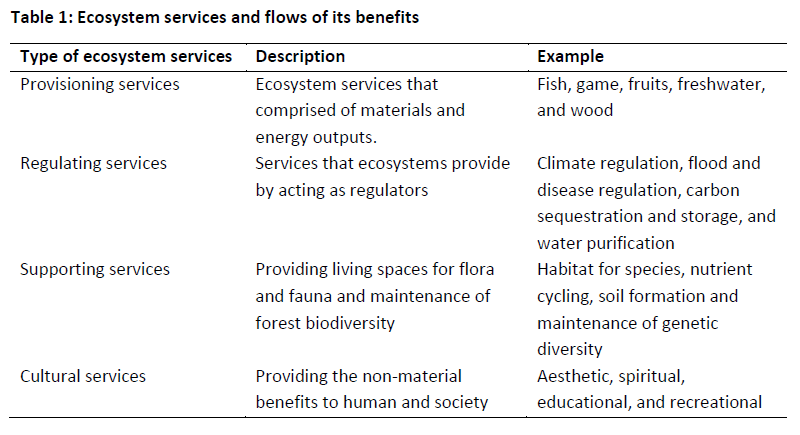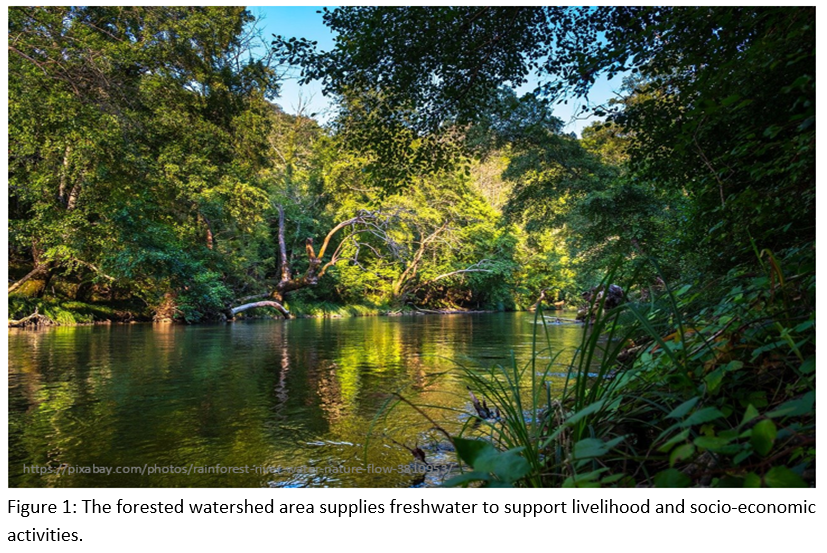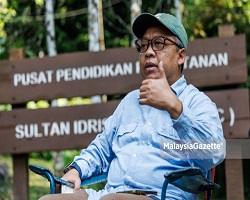In recent years, ecosystem services and natural capital have emerged as two prominent terminologies that highlight the importance of forests to ensure the well-being of current and future generations. In the ecological, environment and wider literature, the commonly referred framework associated with ecosystem services is the Millennium Ecosystem Assessment (MEA, 2005), in which ecosystem services is defined as “the benefits people obtain from ecosystems”. In regard to forest ecosystem services, it offers four types of services (provisioning services, regulating services, supporting services and cultural services) simultaneously for the benefit of humans and society. Table 1 summarises four types of forest ecosystems services and flows of their benefits. Given the nature of humans to satisfy their needs and due to increasing demand for socio-economic development, inherently, there are consequences in the usage of forest ecosystem services. When forest ecosystem services are excessively exploited and unregulated, it adversely impacts general environmental conditions (e.g., climate change and water pollution). Subsequently, it affects the quality of livelihood and well-being (e.g., extreme temperature, increased drought, and water shortage).

For natural capital, the term is generally defined as “the world’s stocks of natural assets which include geology, soil, air, water and all living things” (Word Forum of Natural Capital, 2021). Natural capital has also been argued as “the stock of materials and services” (Costanza et al., 1997) and further redefined into a more functional definition as “stocks of natural assets that yield a flow of valuable ecosystem goods and services into the future” (Costanza & Daly, 1992). Natural capital falls into two categories: (i) renewable or active natural capital and (ii) non-renewable or inactive natural capital. Renewable natural capital uses the sun as its primary energy source (solar) to stay active and for self-maintenance, while non-renewable natural capital is distinguishably passive and yield no value unless it is extracted and utilised (Costanza & Daly, 1992). An example of renewable natural capital is forest ecosystems, as they can be harvested in the form of ecosystem goods and services (e.g., timber, freshwater, wild mushrooms, and game). Meanwhile, fossil fuels and minerals in soils are examples of non-renewable natural capital. As humans and society exploit forests to obtain ecosystems goods and services, they indirectly utilise both renewable and non-renewable natural capital for livelihood and well-being. Therefore, forests contain ecosystems goods and services, and the natural capital stocks that produce them are critical to the functioning of human life and the development of society.


Although ecosystem services and natural capital are often used imprecisely or interchangeably, both terminologies seek to outline and point out the interdependency and synergy between ecosystem services and natural capital derived from forests. The simplest understanding of ecosystem services refers to the flow of benefits from forest goods and services used or consumed by people and society for economic purposes and livelihood. On the other hand, natural capital indicates the stock of natural forest ecosystems from which these benefits flow. For example, a forest is the component of natural capital, while timber harvested from this forest is considered the ecosystem services it provides. As the essence of natural capital is the stock of resources that generate forest ecosystem services, there is a crucial link between natural capital and ecosystem services. It means that when humans unsustainably consume certain types of forest ecosystems services for livelihood and socio-economic development, the stocks of natural capital which provide them may also be rapidly degraded or depleted.
Unregulated or poor management of natural capital threatens and pose a high environmental risk to the sustainability of forest ecosystems services. Not only it becomes an ecological liability, but it also risks the long-term sustainability of social and economic aspects of humanity. Overexploiting natural capital degraded forest ecosystem services as it could cause the decline or disappearance of forest biological diversity. It consequently would be catastrophic for human livelihood and well-being as ecosystem productivity and resilience decline over time. In some cases, it causes economic losses and even loss of human life due to extreme events such as heavy floods and severe droughts. Overexploitation of natural capital could also lead to the irreversible and permanent degradation of forest ecosystem services, making human life difficult, including starvation, conflict over resource scarcity, and displacement of populations (Word Forum of Natural Capital, 2021). Understanding forest ecosystem services and natural capital are thus essential as it provides insight into the wealth these natural assets offer to secure the life-support systems for humans, both for livelihood and well-being. It also raises awareness for the sustainability of natural capital and the preservation of ecosystem services. Without proper understanding, there will be no efficient management and regulation, risking the collapse of local, regional, or even global forest ecosystem services and natural capital.
References
Costanza, R., & Daly, H. E. (1992). Natural capital and sustainable development. Conservation Biology, 6(1), 37-46.
MEA, 2005. Millennium Ecosystem Assessment: Ecosystems and Human Well-being: Synthesis. Island Press, Washington DC.
Word Forum of Natural Capital (2021). What is natural capital? Retrieved 30 October 2021 from https://naturalcapitalforum.com/about/
Tarikh Input: 28/07/2022 | Kemaskini: 28/07/2022 | masridien
PERKONGSIAN MEDIA































